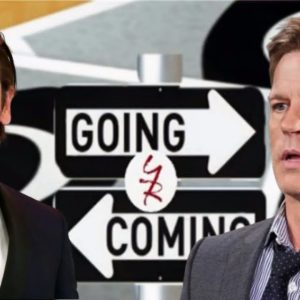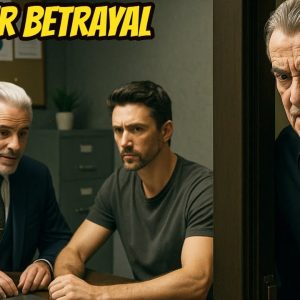In The Young and the Restless, the storyline between Audra and Holden serves as a chilling reflection on toxic relationships, control, and emotional entrapment. What begins as a passionate, youthful love story evolves into a terrifying narrative of obsession and manipulation, where the past becomes an inescapable specter haunting Audra’s every step.
Holden was once a significant figure in Audra’s life, a man whose love seemed intense and all-consuming. But beneath the surface of romantic devotion lay a darker need—control. What started as innocent jealousy slowly escalated into invasive behaviors. He questioned her every move, scrutinized her friendships, and eventually tried to isolate her completely. Though Audra eventually broke away from the relationship, choosing to pursue power and independence in Genoa City, Holden never truly let go.
His haunting presence persisted—subtle at first, through unexpected meetings and carefully calculated coincidences. Over time, his appearances became frequent and intrusive, turning Audra’s world into a maze of fear. She began to feel monitored, her safety questioned, and her private life invaded. Flowers left on her windshield with cryptic messages, cold stares from shadows outside her office, and his unnerving familiarity with her routine signaled a pattern of stalking behavior masked as love.
Holden’s obsession went beyond psychological torment. He sabotaged her relationships, threatened to reveal her darkest secrets, and used emotional manipulation to keep her under control. Despite Audra’s attempts to resist and assert her independence, she was trapped in a vicious cycle of fear and appeasement. The situation reached a horrifying climax when Holden abducted her, dragging her away from Genoa City to a secluded house in California, where he kept her isolated under the delusion that they were starting anew.
This act of kidnapping was not just a physical crime—it symbolized the emotional captivity Audra had endured for years. In that small, coastal house, Audra lived in constant fear, her strength tested daily as she searched for a way out. Her once powerful persona was reduced to mere survival, and yet, she held onto hope that someone would notice her disappearance and uncover the truth behind Holden’s façade.
Parallel to this harrowing experience was another disturbing twist—Holden’s transformation into “Damian,” a fabricated identity he used to reenter Audra’s life unnoticed. His impersonation of another man, down to voice, behavior, and intimate habits, exposed the extent of his manipulation. The real Damian, initially unaware of Holden’s true intentions, gradually became involved in the psychological thriller unfolding around him. Torn between guilt and responsibility, Damian tried in vain to pull Holden away from his destructive obsession.
As the tension in Genoa City intensified, Audra found herself more isolated than ever. Her efforts to keep her trauma hidden only made her more vulnerable. She was afraid to speak up, worried that no one would believe her or that her image would be ruined. Meanwhile, Holden continued to blur the lines between love and control, care and coercion.
Ultimately, Audra’s battle is not just with Holden—it is with her own past, her fear, and the societal silence surrounding abusive relationships. Her story is a powerful reminder of how obsession can masquerade as affection, how control can hide behind concern, and how the scars of toxic love can run deeper than anyone sees.
This tragic tale is a stark warning. It emphasizes the importance of recognizing red flags, speaking out against abuse, and supporting those who are struggling to break free. For Audra, true freedom lies not in running away from the past, but in facing it with courage and reclaiming her story—before she becomes nothing more than a shadow in someone else’s nightmare.





